Violência e Reforma da Segurança na América Latina: Um Tabu para as Agências de Cooperação Internacional?
Resumo
A violência latino-americana vem chamando a atenção de diversos organismos internacionais desde fins da década de 1980. A região apresenta a maior taxa de homicídios do planeta e a violência é a principal preocupação do cidadão latino-americano. Já há uma quantidade substantiva de trabalhos e relatórios sobre a gravidade do tema e a partir dos anos 2000 reconheceu-se internacionalmente o nexo entre segurança e desenvolvimento. Vários pesquisadores latino-americanos clamam a necessidade de reforma das polícias e dos protocolos de gerenciamento das forças de segurança. Contudo, apenas 0,7% do total de recursos destinados pela comunidade internacional de doadores para a América Latina atende à rubrica “reforma do setor de segurança”. Este trabalho busca algumas explicações para este paradoxo, procurando explorar quais seriam as razões para uma suposta “resistência” das agências de cooperação internacional para com o tema da segurança na região.
Palavras chave: América Latina; Segurança pública; Reforma das polícias; Cooperação internacional para o desenvolvimento.
Abstract
Latin American violence has drawn the attention of several international organizations since mid-80’s. The region features the World’s highest homicides rate and violence is the main concern of the Latin American citizens. There is already a substantial amount of academic works and international reports on the gravity of the subject, and the nexus between security and development was finally recognized in the 2000’s. Several Latin American researchers claim the need for police reforms and the review of security forces management protocols. However, only 0.7% of total resources destined by the international community of donors to Latin America meets the heading "Security Sector Reform". This work seeks for some explanations for this paradox, searching to explore what would be the reasons for the supposed "resistance" of international cooperation agencies with security issues in Latin America.
Keywords: Latin America; Public safety; Police reform; International cooperation.
--------------------------------------
Ana Maura Tomesani
Doutoranda em Relações Internacionais
Universidade de São Paulo (IRI/USP)
Cette adresse e-mail est protégée contre les robots spammeurs. Vous devez activer le JavaScript pour la visualiser.
Violência e Reforma da Segurança na América Latina: Um Tabu para as Agências de Cooperação Internacional?
Introdução
Países da América Latina e do Caribe experimentaram, nas décadas de oitenta e noventa, um aumento sensível em suas taxas de crimes violentos, especialmente de homicídios, bem como o desenvolvimento de organizações criminosas com base no tráfico de drogas. Segundo dados da Organização Mundial da Saúde(1) (OMS), a região é a que apresenta as maiores taxas de homicídios no mundo, com cerca de 20 assassinatos por 100 mil habitantes. O relatório Estudo Global de Homicídios do United Nations Office for Drugs and Crime (UNODC) de 2013(2) afirma que estão na América Latina os países com maior número de homicídios em termos absolutos (Brasil) e relativos (Honduras).
De acordo com dados do relatório Hidden in Plain Sight da UNICEF (Fundo das Nações Unidas para a Infância) publicado em 2014(3), o homicídio é a principal causa de morte entre garotos de 10 a 19 anos em sete países da América Latina e do Caribe – Brasil, Colômbia, El Salvador, Guatemala, Panamá, Trinidad e Tobago e Venezuela. A maioria dos países da região está em categorias críticas que têm entre 10 e 80 homicídios por 100 mil habitantes. A OMS considera 10 homicídios por 100 mil habitantes como o limite do nível epidêmico de violência – o que quer dizer que a maior parte do continente está mergulhada em uma epidemia de homicídios. Apenas para ilustrar, de acordo com o mesmo estudo supracitado do UNODC, o Canadá tem uma taxa de 1,6 homicídios por 100.000 habitantes.
Em 2008, uma pesquisa do Latinobarometro mostrou que a preocupação com o crime e com a violência ultrapassou, pela primeira vez desde o início da medição, a preocupação dos povos da América Latina para com o desemprego(4). O relatório Estado das Cidades da América Latina e Caribe (5), divulgado pelo Programa das Nações Unidas para os Assentamentos Humanos (ONU-Habitat em 2012, reforça que a violência na América Latina e Caribe é a principal preocupação de seus cidadãos. O relatório traz ainda a informação de que das 16 mil municipalidades pesquisadas no estudo, a violência se encontra entre as três principais preocupações dos governos locais.
Curiosamente, o mais recente relatório das Nações Unidas sobre as Metas de Desenvolvimento do Milênio (2015)(6) mostra que a região conseguiu melhorar seus indicadores sociais, a fim de alcançar os ODMs (Objetivos do Milênio). A proporção de crianças desnutridas foi reduzida pela metade, a mortalidade infantil e materna caiu na região e a proporção de mulheres na escola em relação aos homens mostrou avanço significativo. A pobreza também foi reduzida na região, embora haja países que alcançaram uma redução maior do que outros.
Entretanto, o crescimento econômico desses países durante os últimos 15 anos parece não ter corroborado para uma redução significativa da criminalidade na região. A criação de novos postos de trabalho e a melhoria dos indicadores sociais não têm sido capazes de reverter o quadro de violência e a sensação de insegurança (Sapori, 2012). O argumento de que o crescimento econômico ou a redução da pobreza tem como resultado a redução automática de violência não está confirmado para esta região. Os estudos que têm sido produzidos mostram que os custos da violência são muito altos e a quantidade de recursos que esses países investem se reflete num crescimento econômico e social menor, já que a violência urbana drena recursos que poderiam ser investidos em outras áreas (Kahn, 1999; IPEA, 2004, World Bank, 2011). Estudos recentes realizados por pesquisadores de todo o mundo foram compilados no documento Geneva Declaration on Armed Violence and Development (2006)(7) para tentar provar que a violência armada é diretamente responsável pela redução de indicadores de desenvolvimento.
De sua parte, as forças policiais têm sido vistas mais como perpetradoras desta mesma violência do que como protetoras dos cidadãos. Poucas corporações policiais latino-americanas passaram por reformas substantivas em suas culturas organizacionais no pós-ditadura, o que significa que carregam, ainda, um ranço de autoritarismo e justiçamento. O cenário de violência latino-americano parece sugerir a necessidade de uma reforma estrutural substantiva nas forças policiais para que estas possam cumprir seu papel a contento – adequar-se aos padrões democráticos de atuação policial e desenvolver competências para enfrentar a violência urbana (o que impõem também reduzir a violência cometida pela própria polícia). Isso significa repensar os meios de seleção e formação dos policiais, o controle interno e externo da conduta policial, a avaliação externa da gestão policial, o fortalecimento de vínculos com a comunidade (Fruhling, 2009; Fruhling et al, 2006), a reformulação de planos de carreira e salários e a redefinição dos mandatos policiais (Muniz & Proença, 2007).
Contudo, se examinarmos os relatórios das agências de cooperação internacional para o desenvolvimento (doravante ACIDs)[8], podemos constatar que a maior parte dos recursos disponíveis dos países doadores para países em desenvolvimento é para projetos de erradicação da pobreza, crescimento econômico, infra-estrutura, saúde ou conservação ambiental. De acordo com dados da Organization for Economic Cooperation and Development (OCDE, em português), entre 2004 e 2014, apenas 0,7% do total de recursos doados dos países da OCDE para a América Latina foi destinada à reforma do setor de segurança destes países. Deste total, que chega a 446 bilhões de dólares entre 2004 e 2014, 23% é proveniente dos EUA e 37% do Canadá. Juntos, EUA e Canadá respondem por 61% dos recursos externos destinados à Reforma do Setor de Segurança na América Latina. O restante está pulverizado entre outros 9 países doadores[9].
Apesar de Canadá e EUA aparecerem como os maiores doadores para programas de reforma do setor de segurança na América Latina, os montantes transferidos representam pouco do total de doações feitas por cada um destes países à América Latina como um todo no mesmo período: 2% no caso do Canadá e 0,4% no caso dos EUA. Se a violência urbana é a preocupação número um presente na América Latina e vários estudos mostram que ela reduz os indicadores de desenvolvimento, quais são os fatores que explicam o comportamento refratário das ACIDs ao apoio de projetos de reforma do setor de segurança? Esboçaremos algumas explicações.
I. Uma Agenda tímida para um problema premente
Leeds (2007), trabalhando com dados sobre a reforma de polícia no Brasil, afirma que muito embora a questão da segurança pública tenha se tornado uma prioridade entre as preocupações dos brasileiros, a comunidade internacional de doadores[10] tem sido lenta em reconhecer que as altas taxas de criminalidade e violência afetam tanto o fortalecimento e a consolidação de instituições democráticas como o bem estar econômico das populações atingidas. A mesma autora informa também que o entendimento daquilo que podemos chamar de “intervenção em segurança pública” é ainda muito limitado por parte desta comunidade, indo pouco além do “police reform”. Apesar dos vários projetos já desenvolvidos no país e apoiados por ACIDs, órgãos multilaterais e fundações privadas, a comunidade internacional de doadores ainda é pouco capaz de vislumbrar as inúmeras possibilidades de intervenções capazes de surtirem efeito duradouro e com potencial de gerar mudanças estruturais na cultura organizacional das instituições policiais, como o estreitamento da relação entre polícia e academia ou polícia e movimentos de direitos humanos e/ou polícia e comunidade.
Entre os países da OCDE, a questão da violência nos países em desenvolvimento ganhou força a partir de uma importante publicação do Banco Mundial[11] reconhecendo a estreita relação entre segurança e desenvolvimento. Desde então, foram editados pela organização vários manuais de orientação para financiamento de projetos neste campo, sendo que em 2004 foi criada a rubrica “Security Management and Reform” para que fosse possível monitorar o fluxo de recursos destinados a esta finalidade[12]. Alguns pesquisadores e funcionários de organizações multilaterais esclarecem que muitos avanços têm sido verificados na maneira como a comunidade internacional de doadores têm pautado a questão e se mostram otimistas com os resultados. No Banco Mundial o assunto vem ganhando espaço desde 2004, quando o tema surgiu no Setor de Desenvolvimento Urbano do Banco, passando em 2010 para o Setor de Desenvolvimento Social e ganhando inclusive uma Equipe de Segurança Cidadã para pensar estas questões. Os primeiros países beneficiados com empréstimos foram México, Honduras e Guatemala. Projetos de diferentes áreas vem incluindo um componente de prevenção à violência no plano de trabalho. Já o Banco Interamericano de Desenvolvimento estabeleceu uma Unidade de Segurança Pública e vem investido desde 1998 no setor. O primeiro empréstimo foi para o financiamento de um grande programa de segurança cidadã na Colômbia. Ambas as instituições editaram publicações importantes na última década, que se tornaram referências no assunto[13].
O que motivou estas organizações a se mobilizar para criar uma agenda em torno da questão foi a constatação de que o crime e a violência estavam desestabilizando algumas conquistas recentes - algumas inclusive resultantes de programas financiados por elas - para o progresso de países em desenvolvimento. Certos indicadores começaram a regredir e ficou claro que era preciso quebrar o ciclo da violência para que estes países retomassem o desenvolvimento. Governos latino-americanos começaram a chamar a atenção para o tema, criando um acúmulo de informações e forjando inclusive expressões específicas, como “segurança cidadã”. Os bancos passaram a ver nisso uma oportunidade de negociar empréstimos na região.
Embora tímida, esta agenda é promissora dentro destas instituições. Por outro lado, há também pesquisadores que se preocupam com a redução do espaço concedido à pauta da violência por parte das fundações privadas, já que estas são as maiores financiadoras de ONGs que trabalham com o tema na América Latina (Fundação Ford, Tinker Foundation, Open Society Foundation, Fundação Hewllet, MacArthur Foundation, etc.), responsáveis pelo estabelecimento de pontes de diálogo entre instituições policiais e academia. Vários projetos foram financiados na década de 90 e início dos anos 2000, fruto das agendas destas instituições para financiamento de projetos em Direitos Humanos (Leeds, 2007), mas as fundações têm abandonado o tema. E isso preocupa porque as fundações privadas são organizações que possuem mais liberdade entre os agências de cooperação internacional para definir linhas de financiamento.
O tema está também crescendo entre os órgãos ligados às Nações Unidas, muito embora alguns pesquisadores sugiram que este crescimento tenha se dado muito mais no plano dos debates que estes organismos vêm fomentando do que propriamente em termos de orçamento voltado para projetos na área. Esta questão merece ainda uma investigação mais apurada nos números da organização. E, a despeito do fato de ser um tema ainda pouco trabalhado em termos de cooperação norte-sul, vale destacar que o tema vem ganhando força no âmbito da cooperação sul-sul. O Brasil, via Agência de Cooperação Brasileira (ABC), vem trabalhando na construção de uma agenda para este modelo de cooperação, com foco no suporte técnico e infra-estrutural a Estados Frágeis (Muggah e Carvalho, 2011). O know how do Brasil neste tipo de articulação vem sendo reconhecido pela OCDE e por organizações multilaterais, ao ponto de a ABC estar sendo acionada para triangular recursos do “norte” para Estados Frágeis do Sul (Muggah e Carvalho, 2011).
Vale esclarecer que não estamos tratando aqui de questões relativas a se devemos ou não buscar recursos internacionais para problemas locais – esta é uma outra discussão. Limitamo-nos aqui a olhar o panorama da segurança latino-americana e verificar a oferta de recursos internacionais destinados a esta temática. E, a patir daí, esboçamos algumas explicações para a carência de recursos destinados à segurança.
II. As possíveis explicações (14)
Acreditamos que não haja apenas um fator que explique o comportamento refratário de boa parte das ACIDs diante do quadro de violência e criminalidade latino-americano. A literatura voltada à questão nos permite mapear algumas explicações. De acordo com Hammergren (2003), a USAID (United States Agency for International Development) iniciou um programa de reforma de sistemas de justiça na América Latina no início dos anos 80. O programa não contava com apoio interno da agência, dominada por experts em agricultura, educação e saúde, além de engenheiros de um tempo em que grandes projetos infra-estruturais constituíam o grosso do financiamento da agência. O programa de reforma de sistemas de justiça foi concebido para ser executado com orçamento mínimo se comparado com outros programas da agência. Segundo Hammergren, é difícil dizer se todo o investimento feito ao longo de 20 anos na região pode ser avaliado como tendo resultado positivo. Por um lado, o programa acabou atraindo outros doadores para a região, como as fundações privadas e as agências multilaterias, uma vez que se tratava de um programa barato se comparado aos investimentos infra-estruturais de grande porte exigidos por outros setores. Por outro lado, os resultados dos programas em si ficaram aquém do esperado, já que se chegou à conclusão de que mudanças estruturais e organizacionais no sistema de justiça destes países são lentas e precisam ser monitoradas por longos períodos, que ultrapassem o tempo de um mandato político ou de uma gestão administrativa. Por esta razão, o programa foi abandonado pela agência no final dos anos 90.
Leeds (2007) parece corroborar desta ideia segundo a qual programas neste campo – ela trabalha mais especificamente com police reform - acabam afastando doadores por requererem longos períodos de tempo até gerarem resultados paupáveis. A maior parte da ajuda para este tipo de programa ocorre entre governos, está baseada em assistência técnica e os acordos não costumam passar de dois anos. Este período talvez seja suficiente para deflagrar mudanças, mas é seguramente insuficiente para atingir os resultados esperados em termos de reestruturação da cultura organizacional das instituições policiais visando à democratização das mesmas. Quaisquer programas na área de segurança pública – seja reforma do sistema de justiça, seja reforma de polícia, controle de armas ou monitoramento de infomações – requer tempo para poder ser avaliado com condições de se aferir sucesso ou fracasso. E, ao que parece, a comunidade internacional de doadores não dispõe deste tempo e prefere apoiar projetos que trarão resultados mais rapidamente, ainda que sejam mais caros. Um programa de vacinação de crianças ou de abastecimento de água e esgotamento sanitário geram resultados rápidos e bastante paupáveis – X crianças imunizadas em X meses; X famílias beneficiadas ao final do programa. A dificuldade em se obter resultados paupáveis e no curto e médio prazo nos programas em segurança pública explicaria, portanto, o desinteresse das ACIDs na área.
Outro ponto levantado pela literatura é o receio da forma como estes recursos podem ser utilizados pelos países receptores. De acordo com Bayley (2006), é muito difícil conseguir chegar a uma estimativa confiável de quanto os EUA investem em police assistance no mundo. Isso porque todo tipo de investimento para financiamento de programas relacionados a policiamento foram proibidos em 1974, como uma reação do congresso americano à forma como recursos destinados a treinamento e equipamento policial foram utilizados entre 1962 e 1974 na América Latina e no Vietnã. Os recursos americanos foram utilizados para apoiar estratégias repressivas e cruéis de policiamento durante a vigência de governos autoritários nestas localidades, sob o argumento do combate ao comunismo. Ainda segundo o autor, após a Queda do Muro de Berlim a política externa dos EUA passou a focar na reorganização interna de países devastados por guerras civis, limpezas étnicas, crime organizado e emergências humanitárias. Com o afastamento do “fantasma” do comunismo e a crescente consolidação da democracia como forma de governo estável e pacífica, ressurge o interesse em apoiar programas de reforma policial, já que a polícia passou a ser entendida como ator chave na promoção da estabilidade e ordem democrática agora desejada. Neste contexto, a proibição de 1974 foi emendada com uma série de exceções para possibilitar este tipo de assistência, tendo como argumento principal a neutralização de ameaças à soberania americana (crime organizado, tráfico de drogas, terrorismo, etc.).
Com isso, a assitência policial prestada dos EUA a vários países está diluída em muitos órgãos governamentais distintos, com nomes que nem sempre estão relacionados diretamente aos programas financiados, o que pode ocultar um enorme montante de recursos que, se estivessem transparentes, poderiam ser questionados não apenas pelo congresso americano, mas também por muitas organizações de direitos humanos preocupadas com o destino e utilização final destes recursos. Por esta razão, parte destes recursos não figuram nos orçamentos anuais da USAID, por exemplo. O caso descrito por Bayley pode refletir a realidade de outras ACIDs. A preocupação política com a forma como este tipo de apoio pode ser interpretado pelo poder legislativo de cada país, bem como pela população e pela comunidade internacional, pode ter desencorajado alguns países de promover este tipo de apoio, fazendo com que preferissem apoiar projetos com finalidades, digamos, irrefutáveis e irrepreensíveis – como, para continuar citando o exemplo da USAID, a produção de guias de respostas ao extremismo violento e estudos sobre o fortalecimento dos fatores de resiliência – ou levando-os a, da mesma forma que os EUA, diluir estes investimentos através de vários departamentos governamentais, tornando-os “invisíveis”.
Analogamente, as mesmas preocupações podem levar ACIDs e organizações multilaterias de cooperação a pensar duas vezes antes de financiar programas nesta área, neste caso por constrangimentos institucionais. Projetos em que os recursos direcionados resultam em abusos autoritários e/ou violação de direitos humanos e civis podem danificar a imagem destas instituições levando estes organismos a um descrédito por parte da comunidade internacional. A questão da imagem institucional é particularmente importante no caso das agências multilateriais, pois a legitimidade delas emana de seus países membros. Um deslize desta natureza na gestão de programas pode deflagrar uma crise institucional que, em tese, pode levar à dissolução dos mesmos.
Conclusões
Explorar a resistência das ACIDs para com o financiamento de projetos no campo da violência e da segurança na América Latina têm dois propósitos: em termos acadêmicos, vale tentar compreender o que molda a formulação de agenda destes organismos. Seria a demanda dos países receptores ou questões internas relativas aos próprios doadores? O que se nota é que, no caso da segurança pública, a oferta de programas e recursos não parece condizente com a demanda. E tratamos aqui de algumas possíveis explicações para o fato.
Captadores de recursos para projetos dentro das estruturas policiais ou de ONGs que trabalham com a temática têm enorme dificuldade para conseguir recursos internacionais. As fundações privadas gozam de um pouco mais de liberdade para fazer este tipo de doação, o que explica talvez o pioneirismo delas na área e o fato de que a maioria das ONGs que trabalham com o tema na América Latina e Caribe sejam financiadas ou tenham em algum momento contado com financiamento destas fundações. Os organismos multilaterais estão cada vez mais “baixando a guarda” e as agências bilaterais seguem resistentes, em que pesem os avanços recentes.
O tema da segurança pública é amplo e abrange desde assuntos menos polêmicos, como a necessidade de agir nos fatores de risco para a violência entre os jovens ao controle das atividades policiais e o fortalecimento de corregedorias e ouvidorias, passando pelo controle de armas, de tráfico de drogas e de pessoas. Trata-se de um campo minado em que uma pisadela em falso pode gerar inúmeras crises internas nos países doadores. Ainda assim, o fato de ser a segurança pública um tema pouco privilegiado na agenda das organizações de cooperação internacional – a despeito do fato de ser o principal problema latino-americano hoje - merece investigações mais aprofundadas.
Notas de fim
-------------------
(1) Dados disponíveis no site: https://goo.gl/EZIYD6, visitado em 03-10-2016.
(2) O relatório pode ser acessado através do link: https://goo.gl/6ltIbt, visitado em 30-09-2016.
(3) O relatório pode ser acessado através do link: https://goo.gl/Qod4Vb, visitado em 30-09-2016.
(4) Dados disponíveis no site da Corporación Latinobarometro. Informe 2008. Santiago de Chile, Chile. Em: http://www.latinobarometro.org/latOnline.jsp, visitado em 05-10-2016
(5) O relatório pode ser acessado através do link: https://goo.gl/A23PqY, visitado em 30-09-2016.
(6) Dados disponíveis no site: https://goo.gl/e89lep, visitado em 03-10-2016.
(7) O documento pode ser acessado através do link: https://goo.gl/mEd42q, visitado em 04-10-2016
(8) As ACIDs são órgãos que fazem parte da burocracia estatal de países doadores e que são responsáveis por definir e monitorar os recursos destinados aos países em desenvolvimento e reportá-los à OCDE.
(9) Fonte: Base de dados da OCDE disponível online (https://goo.gl/n2Eh9F).
(10) Grupo de países desenvolvidos e organizações multilaterais (como OEA, ONU, bancos de desenvolvimento) que realizam transferências sistemáticas de fundos para países em desenvolvimento.
(11) Voices of the Poor, World Bank, Oxford University Press, 2000.
(12) Entre 2005 e 2016, a OCDE editou ao menos 3 publicações dedicadas exclusivamente à questão da reforma do setor de segurança: Security System Reform and Governance (2005); OECD DAC Handbook on Security System Reform: Supporting Security and Justice (2008), Security System Reform: What Have We Learned? (2010).
(13) World Development Report 2011: Conflict, Security and Development; Banco Mundial, 2011; Constructing Public Safety with Civic Responsibility, BID, 2012.
(14) A literatura que sugere haver resistência ao tema da segurança pública por parte de agências de cooperação internacional é 100% norte-americana, o que explica o fato de usarem sempre a USAID como exemplo. Infelizmente, não encontrei textos que tratem do tema fora dos EUA. A pesquisa que desenvolvo busca justamente verificar se o que ocorre nos EUA explica também a resistência de outros países ao tema.
Referências Bibliográficas
Bayley, David (2006). Changing the Guard. Nova York: Oxford University Press.
Fruhling, Hugo (2009). Violencia y Policía en América Latina. Quito: Flacso Ecuador.
Fruhling, Hugo et ali (2006). “El desafio de la Reforma Policial em América Latina”. Revista Eletrónica Agenda Pública, vol 5, nº 8: 2-6. Santiago: Universidad de Chile.
Hammergren, Linn (2003). “International Assistance to Latin American Justice Programs : Toward an Agenda for Reforming the Reformers”. Dans Jensen, Ericket Heller, T. (sous la direction de), Beyond common knowledge: empirical approaches to the rule of law, Stanford: Stanford University Press, p.p. 290-335.
Kahn, Tulio. (1999). “Os custos da violência: quanto se gasta ou se deixa de ganhar por causa do crime no Estado de Sao Paulo”. São Paulo em Perspectiva, vol 13, nº 4, São Paulo: Fundação Seade.
Leeds, Elizabeth (2007). “Serving States and Serving Citizens: Halting Steps toward Police Reform in Brazil and Implications for Donor Intervention”. Policing and Society, vol 17, nº 1: 21-37. London: Taylor and Francis.
Muggah, Robert, Carvalho, Ilona (2011). “O Efeito Sul: reflexões críticas sobre o engajamento do Brasil com Estados Frágeis”. Revista Brasileira de Segurança Pública. Vol. 5, Nº 2, 390-400. São Paulo: Fórum Brasileiro de Segurança Pública.
Muniz, Jacqueline & Proença Jr, Domício. (2007). “Muita politicagem, pouca política os problemas da polícia são”. Estudos Avançados, v. 21, nº 61, p. 159-172. São Paulo: Universidade de São Paulo.
Sapori, L. F. (2012). “Avanço no socioeconômico, retrocesso na segurança pública: paradoxo brasileiro”. Desigualdade & Diversidade – Revista de Ciências Sociais da PUC-Rio, nº 11, ago/dez, pp. 133-158. Rio de Janeiro: Pontifícia Universidade Católica.
Documentos
IPEA (Instituto de Pesquisa Econômica Aplicada) (2004). Analise dos Custos e da Violência no Brasil. Em: https://goo.gl/qkrHdc
World Bank (2011). Crime and Violence in Central America: A Development Challenge. Em: https://goo.gl/D4tdO5
Para citar o artigo
Ana Maura Tomesani, “Violência e Reforma da Segurança na América Latina: Um Tabu para as Agências de Cooperação Internacional?”, RITA [online], nº 10: junho 2017, publicado online em junho de 2017. Disponível online http://www.revue-rita.com/notes-de-recherche10/violencia-e-reforma-da-seguranca-na-america-latina.html#_ednref3


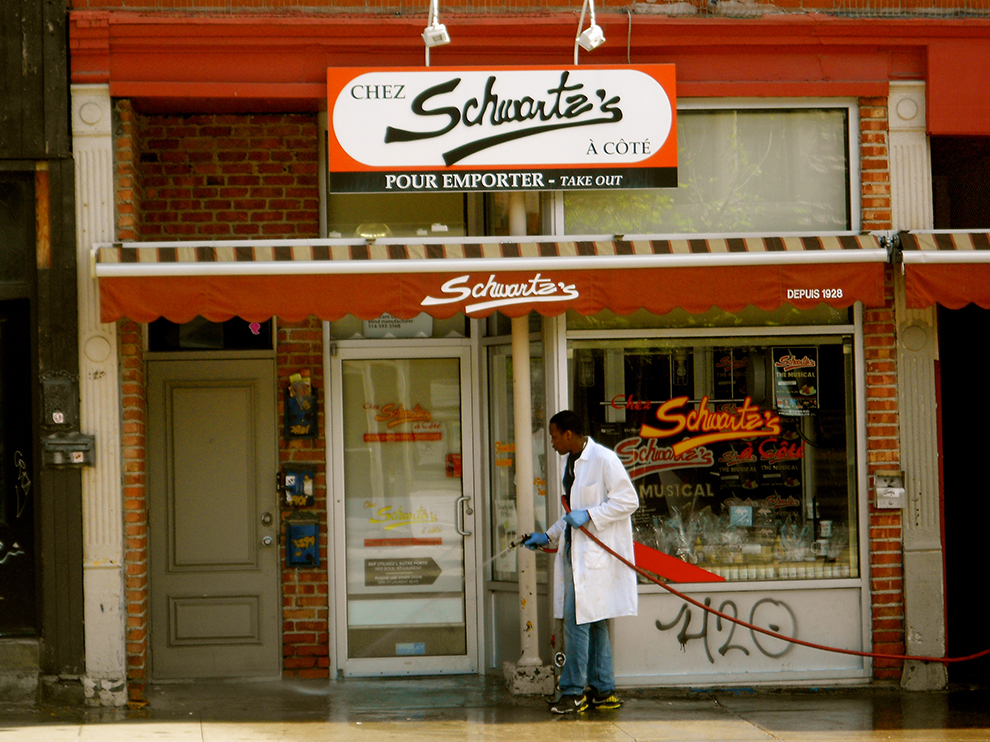
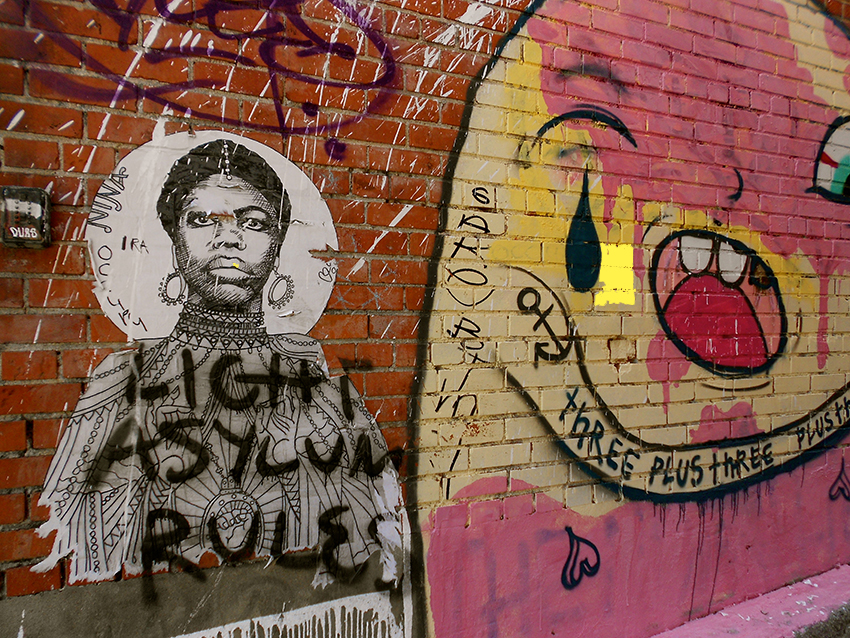
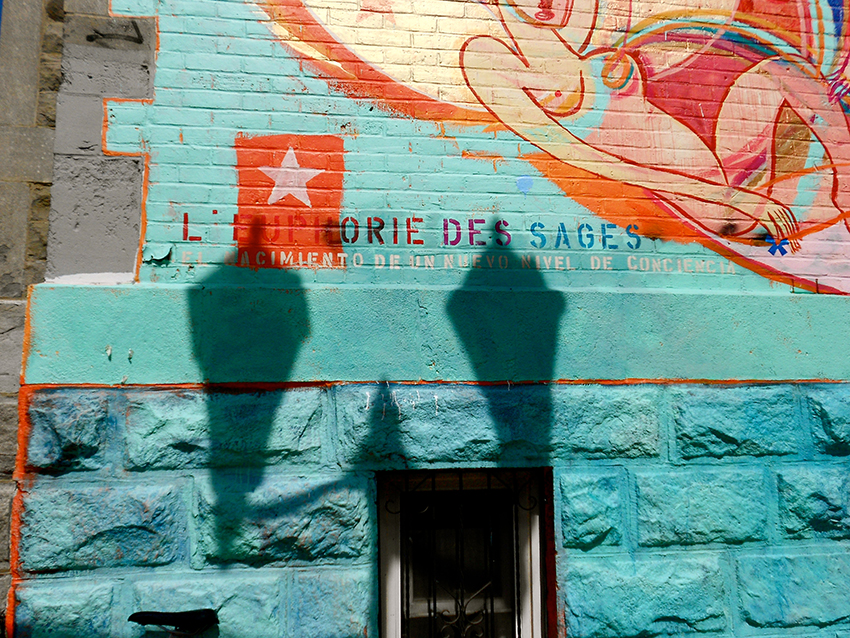
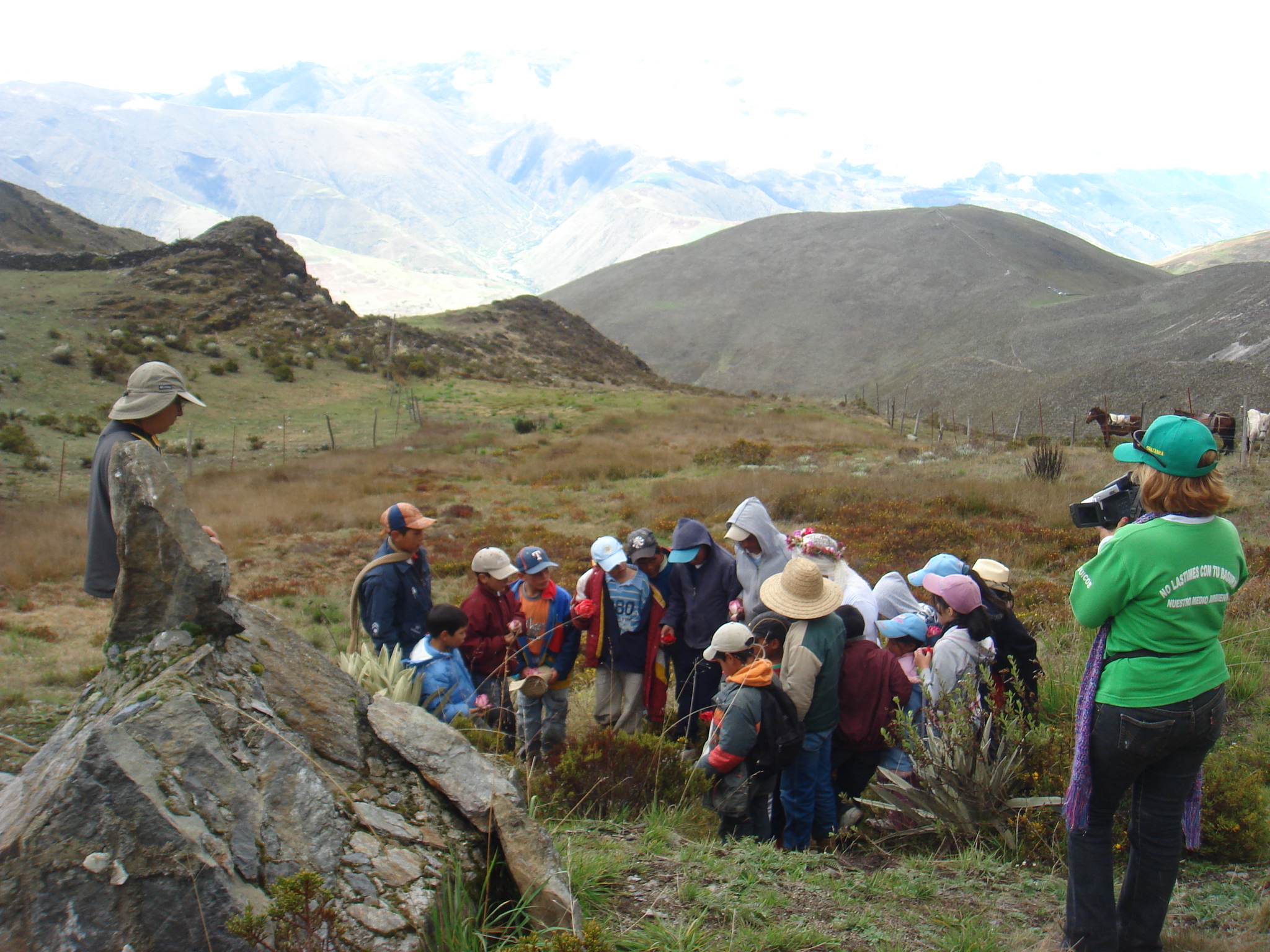
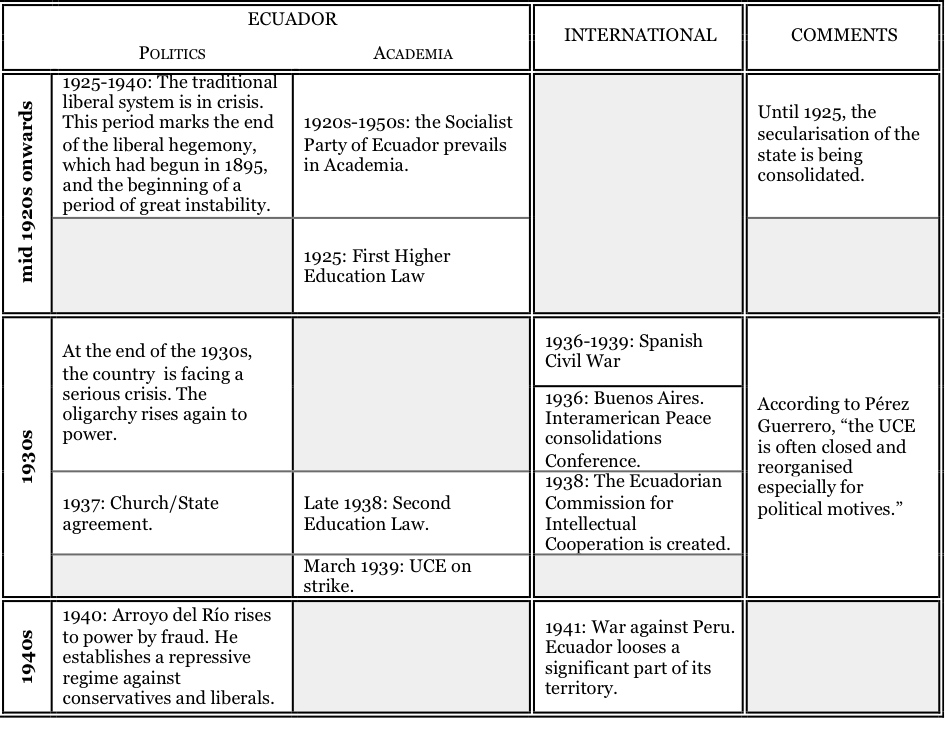
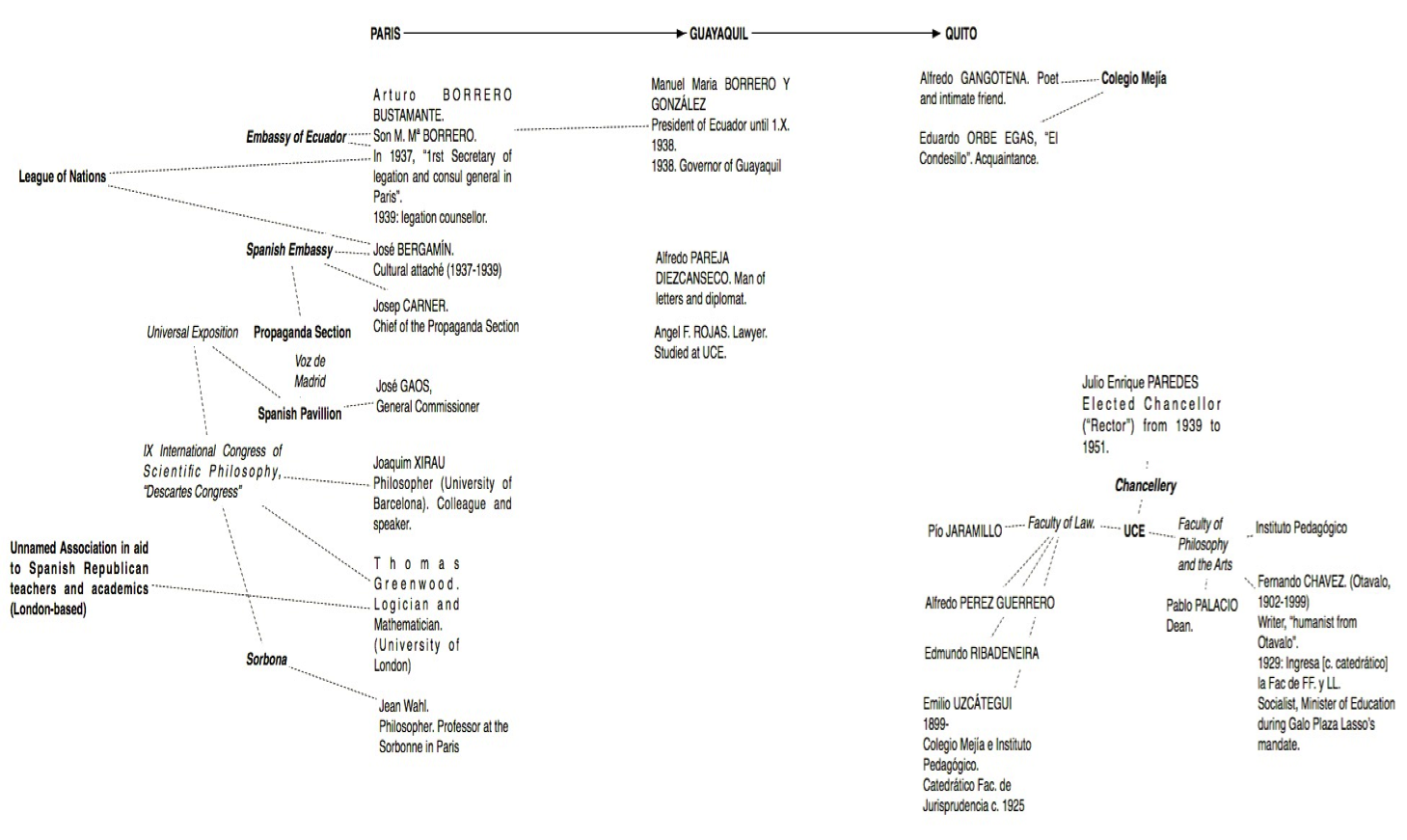
 Avec le soutien du LER-Université Paris 8
Avec le soutien du LER-Université Paris 8